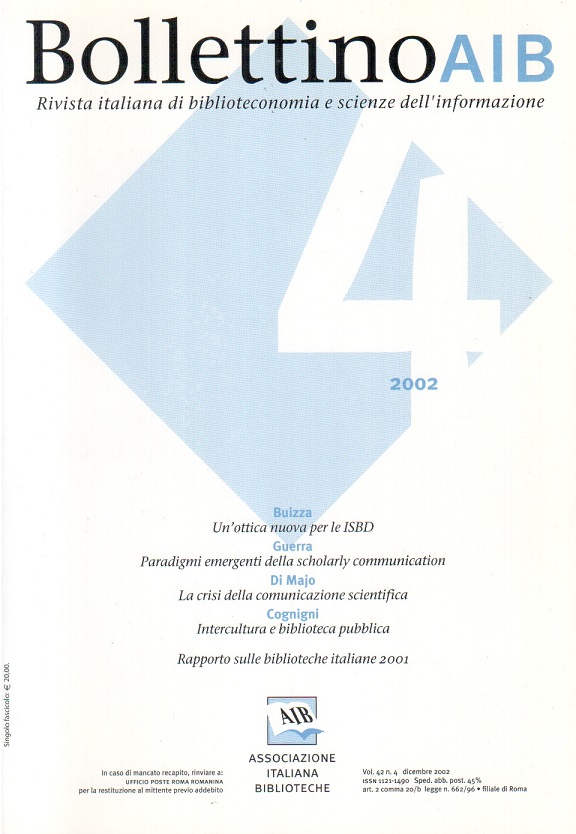Emerging paradigms of scholarly communication
Main Article Content
Abstract
Since the 1970s the constant rise of the prices of scientific magazines has been referred to as the "journals crisis". This price rise has now become a concrete threat for the free exchange of scientific communication through the form of an article. The processes of editorial concentration have been accompanied by price dynamics with growth rates that are systematically four times higher than the rate of inflation. This leads to serious alterations in the dialogue between researchers and to an awareness that an answer must be found to the danger.The crisis also involves a paradoxical aspect. The communities of researchers who produce (with mainly public funds) this special type of literature gratuitously release their products to the publishers yet, when they want to use them, they find themselves up against serious problems of access.The first responses to the crisis have come from the library community. After a relatively reactive phase, marked by cancellations and by the increasingly more intensive adoption of just in times, initiatives were undertaken that had the objective of modifying the actual conditions in which scholarly communication is accomplished. The consortium of libraries, basically founded for benefiting from large-scale economies, now acquires a decisive function: to gain market power and become a strategic actor in the publishing market. Even projects with a typically entrepreneurial nature are implemented to contrast the crisis, with the assumption by universities or coalitions of libraries of specifically editorial activities. This is for example the case of HighWire in Stanford or of SPARC, a coalition of United States university libraries. These aim at forming both an alternative to the great commercial publishers and a competitive factor. Important initiatives have also been born for experimenting new economic models for scholarly communication. The PubMed Central project represents the experimentation of a model that foresees a centralized and free access to peer reviewed academic scientific literature …. after (more or less) six months from its commercial publication, on the basis of the argument that such release of the literature would have small or no economic impact on the publishers. It is precisely to assertively support this model that the researchers' movement, united under the name of Public Library of Science, recently launched an international boycotting action against all those publishers who refuse the free release after the defined embargo period. Another economic model is currently in the experimental phase. Its objective is that of rendering free for everyone access to rigorously certified scientific material and this from its initial publication… funded by the author, or better still, by the institution in which he works. Public and private initiatives have begun. Among these the most important are E-biomed, BioMed Central and the Budapest Open Access Initiative. The Open Archives Initiative also shares this last economic model, but it stands out because of the originality of the strategies and instruments used for acquiring it.New telematic discoveries render obsolete current models linked to the technology of printed paper and foreshadow important changes relative to forms of scientific communication and the contents of those forms.
Article Details
Section
Articles

This work is licensed under a Creative Commons Attribution-ShareAlike 4.0 International License.
